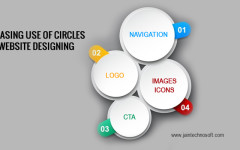
Has it ever come to your mind that the speed of your website is as important as its design or any other feature? Every year internet sees a constant rise in the size of files – from kilobytes the file sizes have moved on to megabytes. This surely impacts the performance, maintainability and speed of the website. So how does low speed impact your business as well as SEO strategy? Let’s analyze some numbers:
Statistics show that even the delay of one second in loading of a website leads to:
- 7% loss of conversion
- 11% decrease in page views
- 16% decrease in customer satisfaction
Various surveys also show that:
- 40% visitors forsake a web page if it takes more than three seconds to load
- In fact as many as 47% of browsers expect a web page to load within two seconds or less
- More than half of the online shoppers prefer shopping from websites which loads its pages quickly!
Thus in spite of using all kinds of SEO techniques to bring up the ranking of your website, if the pages of the site fail to load quickly your business will surely suffer. Web developers not only have control over the size of the files that are loaded on the page, but can also ease the problem of low speed and thereby optimize the code for better performance. This is very important for every SEO friendly website design.
Being one of the leading web designers, we bring you some of the best ways with which you can boost the speed of your site.
Bring down HTTP dependency requests
Dependency requests are the major reason for slow loading of web pages. Every additional request bloats the speed of the site. The same is in the case of HTTP request for several on-page components like image, flash, scripts, stylesheets etc. The best way to avoid this is move towards a leaner website. This can be done by streamlining all the elements on your page, combining multiple style sheets into one, reducing scripts and placing them at the bottom of the web page and most importantly using CSS instead of images wherever possible.
Bring down the time taken by sever to respond
As a web developer, target for a server response time of less than 200 milliseconds. Google usually recommends the use of web application solution and addressing the issues which mars the server’s performance. You can also make use of resources like Google’s Page Speed Tools and slow to evaluate your site’s speed as well as to learn about best practices to follow.
Go for cleaner code
Clean codes are loved by Google. Too many external resources, poorly written JavaScript as well as ridiculously large images are sure to bring down the ranking of your website. Thus to get a prominent place in the SEO rankings it is crucial that you opt for cleaner and better codes.
These are some of the ways in which you can optimize the speed of your website. One point which you need to always keep in mind is that at the end of the day your web page should be informative as well as easy for the page visitor to comprehend and navigate. So whenever you look for better optimization of the web pages, uld always keep the visitor/ reader in the mind and work accordingly. This will surely help you not only bring up the rankings of the site but will also earn you loyal page visitors.



